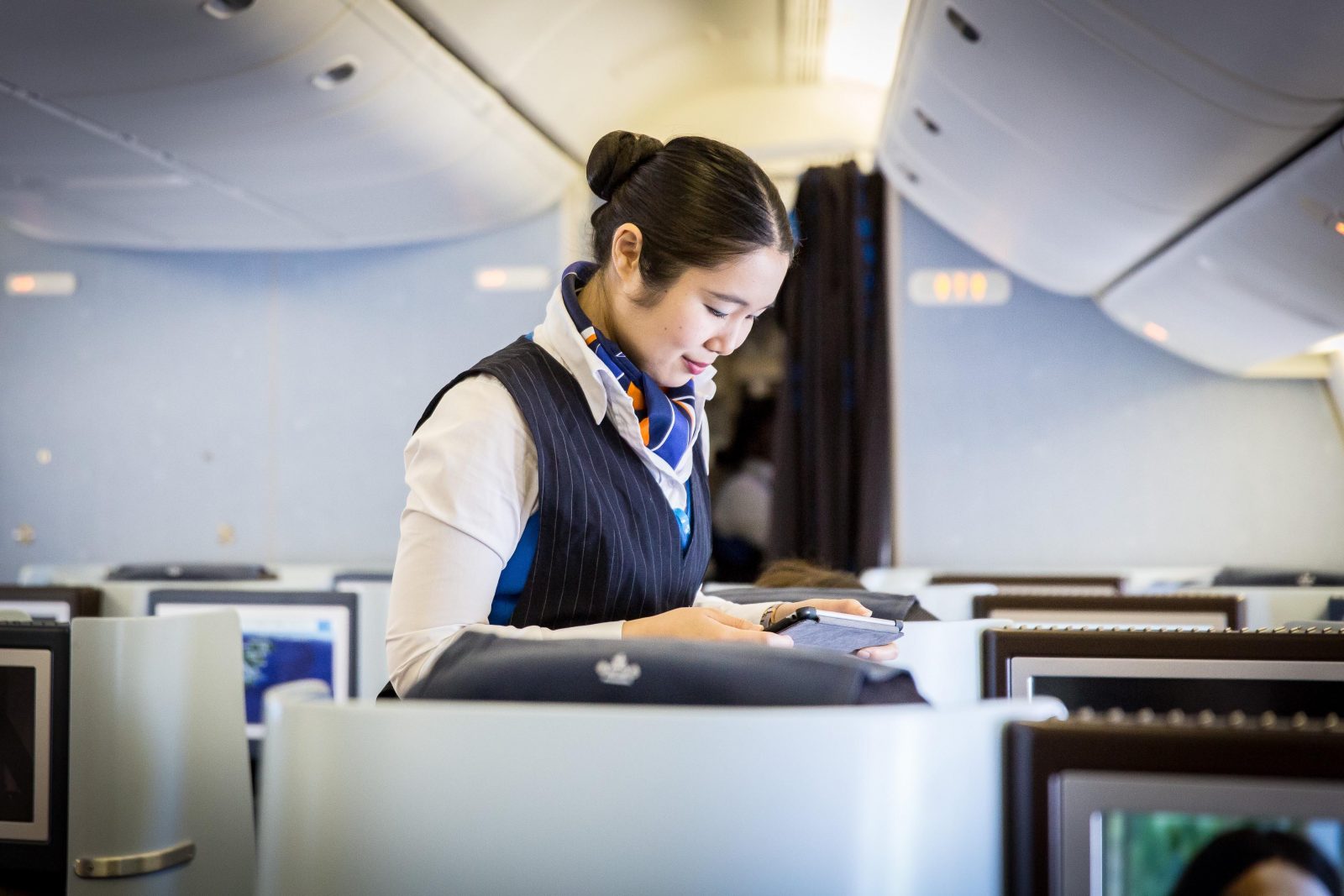
A few days ago we learned that Cathay Pacific, the struggling Hong Kong-based airline had decided to officially kill off a ‘dine on demand’ concept for Business Class passengers. While no official reason has been given, it’s widely believed cabin crew concerns were the main drivers for terminating the programme.
Cathay had experimented with Dine on Demand in Business for only a short time before the project was suddenly taken out of visible view. In May and June last year, the airline trialled the concept on just two routes – London and Chicago from its hub in Hong Kong.
Not long after it launched, however, were serious concerns raised by cabin crew who had to deliver the new service. They said the new routine created too high a workload – making it almost impossible to provide a premium service in Business Class cabins that can seat from 40 to 52 passengers on the airline’s fleet of Boeing 777 aircraft.
But let’s be fair to the Cathay Pacific cabin crew – providing a ‘Dine on Demand’ service in a Business Class setting is no mean feat. The numbers of passengers shared between only two of three cabin crew makes for a high-pressure environment to work in. Dine on Demand requires a lot of organisation and effort – which is difficult to maintain on the airline’s ultra long haul marathon flights.
Yet the desire for airline’s to introduce Dine on Deman in Business is understandable. Once only exclusively available in First Class cabins, Dine on Demand has become a way for airlines to differentiate themselves. The line’s between First and Business have blurred more than ever in a bid to attract high-value passengers – especially as many airlines choose to rip out their First Class cabins altogether.
While Cathay has concluded Dine on Demand doesn’t work for them, they have decided to move away from what some frequent flyers refer to as the assembly line approach to service. Instead, they’re now working on a ‘restaurant style’ concept with improved meals and “a new level of in-flight hospitality.”

“The new service will offer customers greater choice and flexibility than the current service without being Dine on Demand,” a spokesman for Cathay Pacific recently told Australian Business Traveller. “Our customers have told us that improving the quality, presentation and choice of food served onboard are the most important priorities.”
“In a competitive environment we must continue to invest and grow as a full service and premium airline,” the spokesperson continued.
Initially, the new service will debut again on Cathay’s Chicago and London route next July and August. But rolling out the product will take some time – with a hope that most long-range flights will offer the service by mid-2019.
Cathay has also decided to take the wise step of putting cabin crew through “a comprehensive two-day training programme to support them as the stars of the show.”
“The training comprises three modules focusing on service philosophy, galley facilitation and service delivery in the cabin,” a Cathay spokesperson explains.
KLM presses ahead and introduced Dine on Demand
Meanwhile, the Dutch legacy airline, KLM has decided to push ahead with a Dine on Demand concept which it calls ‘Anytime for You’. The new service will be coming to the airline’s Amsterdam to Tokyo route in July and is already available on flights from the Dutch capital to Bangkok.
“KLM’s standard mealtimes don’t always coincide with customers’ needs and wishes,” explains the airline.
“With Anytime For You, KLM offers passengers the freedom to plan their flight in terms of their own preferences with regard to food and drink, but also with regard to rest and work times,” a press release accompanying the announcement continues.

Of course, cabin crew will have an integral role in the success of this concept – something that KLM openly acknowledges. The airline says crew have undergone “special training” and we’ve learned that KLM has taken the decision to increase the number of crew onboard to manage the service.
Upping the number of cabin crew from 2 to 3 now means there’s a ratio of 11 passengers to each crew member. The industry standard is between 13-15 passengers per crew member in Business Class.
This is a big decision to make – KLM only recently reached a settlement with its cabin crew over staff workloads which saw crew guaranteed more rest periods and strict limitations imposed on how many passengers they were expected to serve.
According to Chris van Elswijk, a spokesperson for the VNC union which represents some KLM cabin crew, reaction to the new service has been mixed – with some staff saying they “very much’ like the product while others raise concerns, saying it is “hard and tough” to deliver the service.
KLM becomes one of only a handful of airlines who have made to plunge to actually offer Dine on Demand in Business. It comes at a time where airlines are trying to differentiate themselves but also save money – it will be interesting to see how this one develops.
Related
Mateusz Maszczynski honed his skills as an international flight attendant at the most prominent airline in the Middle East and has been flying ever since... most recently for a well known European airline. Matt is passionate about the aviation industry and has become an expert in passenger experience and human-centric stories. Always keeping an ear close to the ground, Matt's industry insights, analysis and news coverage is frequently relied upon by some of the biggest names in journalism.







